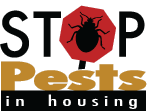Research Database
500 Error
Could not find the included template /muraWRM/sites/stoppests/includes/customtemplates/search_resources.cfm.
Note: If you wish to use an absolute template path (for example, template="/mypath/index.cfm") with CFINCLUDE, you must create a mapping for the path using the ColdFusion Administrator. Or, you can use per-application settings to specify mappings specific to this application by specifying a mappings struct to THIS.mappings in Application.cfc.
Using relative paths (for example, template="index.cfm" or template="../index.cfm") does not require the creation of any special mappings. It is therefore recommended that you use relative paths with CFINCLUDE whenever possible.
Column: 0
ID: CFINCLUDE
Line: 2738
Raw Trace: at cfcontentRenderer2ecfc2107495454$funcDSPINCLUDE.runFunction(/home/neipmc/public_html/www/core/mura/content/contentRenderer.cfc:2738)
Template: /home/neipmc/public_html/www/core/mura/content/contentRenderer.cfc
Type: CFML
Column: 0
ID: CF_UDFMETHOD
Line: 229
Raw Trace: at cfcfobject2ecfc2959885$funcINVOKEMETHOD.runFunction(/home/neipmc/public_html/www/core/mura/cfobject.cfc:229)
Template: /home/neipmc/public_html/www/core/mura/cfobject.cfc
Type: CFML
Column: 0
ID: CF_TEMPLATEPROXY
Line: 103
Raw Trace: at cfMuraScope2ecfc458911062$funcONMISSINGMETHOD.runFunction(/home/neipmc/public_html/www/core/mura/MuraScope.cfc:103)
Template: /home/neipmc/public_html/www/core/mura/MuraScope.cfc
Type: CFML
Column: 0
ID: CF_TEMPLATEPROXY
Line: 1
Raw Trace: at Statement83.evaluate(
Template:
Type: CFML
Column: 0
ID: CF_CFPAGE
Line: 2691
Raw Trace: at cfcontentRenderer2ecfc2107495454$funcSETDYNAMICCONTENT.runFunction(/home/neipmc/public_html/www/core/mura/content/contentRenderer.cfc:2691)
Template: /home/neipmc/public_html/www/core/mura/content/contentRenderer.cfc
Type: CFML
Column: 0
ID: CF_TEMPLATEPROXY
Line: 88
Raw Trace: at cfcontentRendererUtility2ecfc2026198126$funcRENDEREDITABLEATTRIBUTE.runFunction(/home/neipmc/public_html/www/core/mura/content/contentRendererUtility.cfc:88)
Template: /home/neipmc/public_html/www/core/mura/content/contentRendererUtility.cfc
Type: CFML
Column: 0
ID: CF_TEMPLATEPROXY
Line: 3035
Raw Trace: at cfcontentRenderer2ecfc2107495454$funcRENDEREDITABLEATTRIBUTE.runFunction(/home/neipmc/public_html/www/core/mura/content/contentRenderer.cfc:3035)
Template: /home/neipmc/public_html/www/core/mura/content/contentRenderer.cfc
Type: CFML
Column: 0
ID: CF_UDFMETHOD
Line: 1879
Raw Trace: at cfcontentRenderer2ecfc2107495454$funcDSPBODY.runFunction(/home/neipmc/public_html/www/core/mura/content/contentRenderer.cfc:1879)
Template: /home/neipmc/public_html/www/core/mura/content/contentRenderer.cfc
Type: CFML
Column: 0
ID: CF_UDFMETHOD
Line: 229
Raw Trace: at cfcfobject2ecfc2959885$funcINVOKEMETHOD.runFunction(/home/neipmc/public_html/www/core/mura/cfobject.cfc:229)
Template: /home/neipmc/public_html/www/core/mura/cfobject.cfc
Type: CFML
Column: 0
ID: CF_TEMPLATEPROXY
Line: 103
Raw Trace: at cfMuraScope2ecfc458911062$funcONMISSINGMETHOD.runFunction(/home/neipmc/public_html/www/core/mura/MuraScope.cfc:103)
Template: /home/neipmc/public_html/www/core/mura/MuraScope.cfc
Type: CFML
Column: 0
ID: CF_TEMPLATEPROXY
Line: 9
Raw Trace: at cfone_column2ecfm1117906147.runPage(/home/neipmc/public_html/www/sites/stoppests/includes/themes/stoppests/templates/one_column.cfm:9)
Template: /home/neipmc/public_html/www/sites/stoppests/includes/themes/stoppests/templates/one_column.cfm
Type: CFML
Column: 0
ID: CFINCLUDE
Line: 98
Raw Trace: at cfstandardHTMLTranslator2ecfc287996591$funcTRANSLATE.runFunction(/home/neipmc/public_html/www/core/mura/Translator/standardHTMLTranslator.cfc:98)
Template: /home/neipmc/public_html/www/core/mura/Translator/standardHTMLTranslator.cfc
Type: CFML
Column: 0
ID: CF_TEMPLATEPROXY
Line: 137
Raw Trace: at cfpluginStandardEventWrapper2ecfc1103198241$funcTRANSLATE.runFunction(/home/neipmc/public_html/www/core/mura/plugin/pluginStandardEventWrapper.cfc:137)
Template: /home/neipmc/public_html/www/core/mura/plugin/pluginStandardEventWrapper.cfc
Type: CFML
Column: 0
ID: CF_TEMPLATEPROXY
Line: 87
Raw Trace: at cfstandardEventsHandler2ecfc2040981079$funcSTANDARDTRANSLATIONHANDLER.runFunction(/home/neipmc/public_html/www/core/mura/Handler/standardEventsHandler.cfc:87)
Template: /home/neipmc/public_html/www/core/mura/Handler/standardEventsHandler.cfc
Type: CFML
Column: 0
ID: CFINVOKE
Line: 1372
Raw Trace: at cfutility2ecfc1581720696$funcINVOKEMETHOD.runFunction(/home/neipmc/public_html/www/core/mura/utility.cfc:1372)
Template: /home/neipmc/public_html/www/core/mura/utility.cfc
Type: CFML
Column: 0
ID: CF_TEMPLATEPROXY
Line: 87
Raw Trace: at cfpluginStandardEventWrapper2ecfc1103198241$funcHANDLE.runFunction(/home/neipmc/public_html/www/core/mura/plugin/pluginStandardEventWrapper.cfc:87)
Template: /home/neipmc/public_html/www/core/mura/plugin/pluginStandardEventWrapper.cfc
Type: CFML
Column: 0
ID: CF_TEMPLATEPROXY
Line: 422
Raw Trace: at cfstandardEventsHandler2ecfc2040981079$funcSTANDARDDORESPONSEHANDLER.runFunction(/home/neipmc/public_html/www/core/mura/Handler/standardEventsHandler.cfc:422)
Template: /home/neipmc/public_html/www/core/mura/Handler/standardEventsHandler.cfc
Type: CFML
Column: 0
ID: CFINVOKE
Line: 1372
Raw Trace: at cfutility2ecfc1581720696$funcINVOKEMETHOD.runFunction(/home/neipmc/public_html/www/core/mura/utility.cfc:1372)
Template: /home/neipmc/public_html/www/core/mura/utility.cfc
Type: CFML
Column: 0
ID: CF_TEMPLATEPROXY
Line: 87
Raw Trace: at cfpluginStandardEventWrapper2ecfc1103198241$funcHANDLE.runFunction(/home/neipmc/public_html/www/core/mura/plugin/pluginStandardEventWrapper.cfc:87)
Template: /home/neipmc/public_html/www/core/mura/plugin/pluginStandardEventWrapper.cfc
Type: CFML
Column: 0
ID: CF_TEMPLATEPROXY
Line: 845
Raw Trace: at cfcontentServer2ecfc986838494$funcDOREQUEST.runFunction(/home/neipmc/public_html/www/core/mura/content/contentServer.cfc:845)
Template: /home/neipmc/public_html/www/core/mura/content/contentServer.cfc
Type: CFML
Column: 0
ID: CF_UDFMETHOD
Line: 259
Raw Trace: at cfcontentServer2ecfc986838494$funcPARSEURL.runFunction(/home/neipmc/public_html/www/core/mura/content/contentServer.cfc:259)
Template: /home/neipmc/public_html/www/core/mura/content/contentServer.cfc
Type: CFML
Column: 0
ID: CF_UDFMETHOD
Line: 345
Raw Trace: at cfcontentServer2ecfc986838494$funcPARSEURLROOT.runFunction(/home/neipmc/public_html/www/core/mura/content/contentServer.cfc:345)
Template: /home/neipmc/public_html/www/core/mura/content/contentServer.cfc
Type: CFML
Column: 0
ID: CF_TEMPLATEPROXY
Line: 716
Raw Trace: at cfcontentServer2ecfc986838494$funcHANDLEROOTREQUEST.runFunction(/home/neipmc/public_html/www/core/mura/content/contentServer.cfc:716)
Template: /home/neipmc/public_html/www/core/mura/content/contentServer.cfc
Type: CFML
Column: 0
ID: CF_TEMPLATEPROXY
Line: 43
Raw Trace: at cfindex2ecfm866504736.runPage(/home/neipmc/public_html/www/index.cfm:43)
Template: /home/neipmc/public_html/www/index.cfm
Type: CFML
For a broader collection of pest management literature, see the Armed Forces Pest Management Board’s Literature Retrieval System and the Northeastern IPM Center’s Resource Database.
